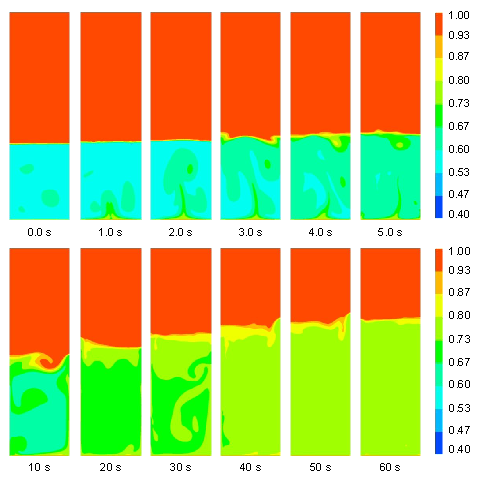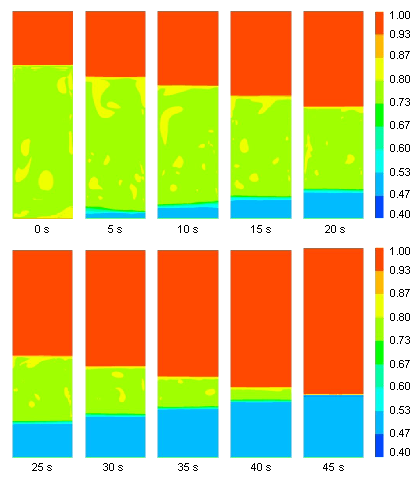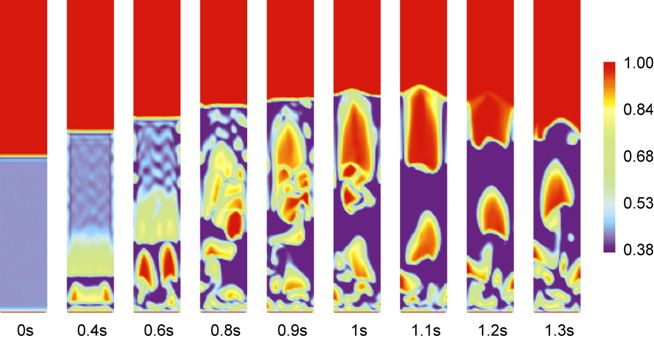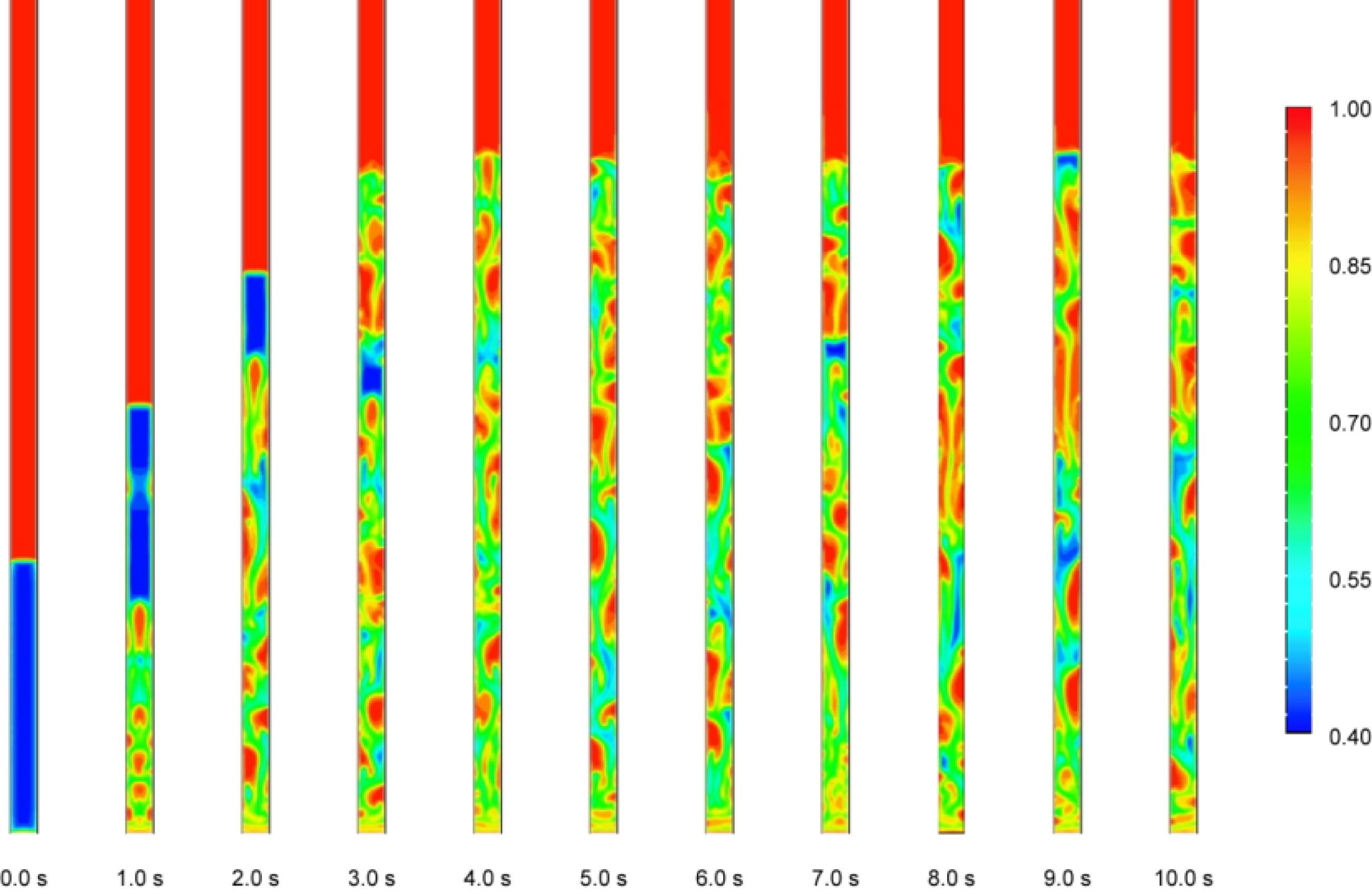|
|
Computational Fluid Dynamics (CFD)The availability of advanced commercial Computational Fluid Dynamics (CFD) software and of faster computer processors have revolutionised scientific research in the field of multi-phase flow. CFD has become an indispensable tool, for researchers and engineers alike, in solving many complex problems of academic and industrial interest in areas such as fluidization. The Group has developed a Fluidization CFD Laboratory comprising 14 fast processors machines and in addition has access to the largest computing facility available in UK, the UCL LEGION supercomputer, providing 42.9 TeraFlops, representing the equivalent strength of approximately 2,700 desktop systems. All
model developments are implemented in state-of-the-art commercial CFD
codes, work is undertaken using both the CFX and FLUENT codes by Ansys.
Mono-size and Binary Fluidized SuspensionsThe research of the Group focuses on the development and validation of advanced Eulerian-Eulerian mathematical models for the computer simulation of gas-solid and liquid-solid fluidized beds across different flow regimes. A new Eulerian model and new closure relationship for the fluid-particle interaction have been developed for the simulation of mono-size fluidized suspensions and for the simulation of mixing and segregation of binary mixtures of industrial rutile powders. For the latter,the role of the particle-particle drag force and the effect of the collisional stress on the dynamics of the binary system have also been investigated. Polydisperse Fluidized SuspensionsIn collaboration with the Politecnico of Turin, the Group is currently developing a CFD model for poly-disperse multiphase systems, where the solid particles constituting the disperse phase are characterized by a very wide size distribution and/or by particle with varying particle size. The evolution of the solid phases is modelled by using a generalized population balance equation (GPBE) solved with sophisticated direct quadrature/and quadrature method of moments (DQMOM and QMOM). Numerical MethodsNew research has recently started in collaboration with the Computational Physics Group of the Earth Science and Engineering Department at Imperial College London to investigate different numerical methods for the solution of the momentum balance equations for fluidized bed systems. (Created 20 November 2007, last updated 20 February 2009) Click on the links below and enjoy some of our movies, see also some of the simulations' results below.
|
||||||||||||||||||||||




